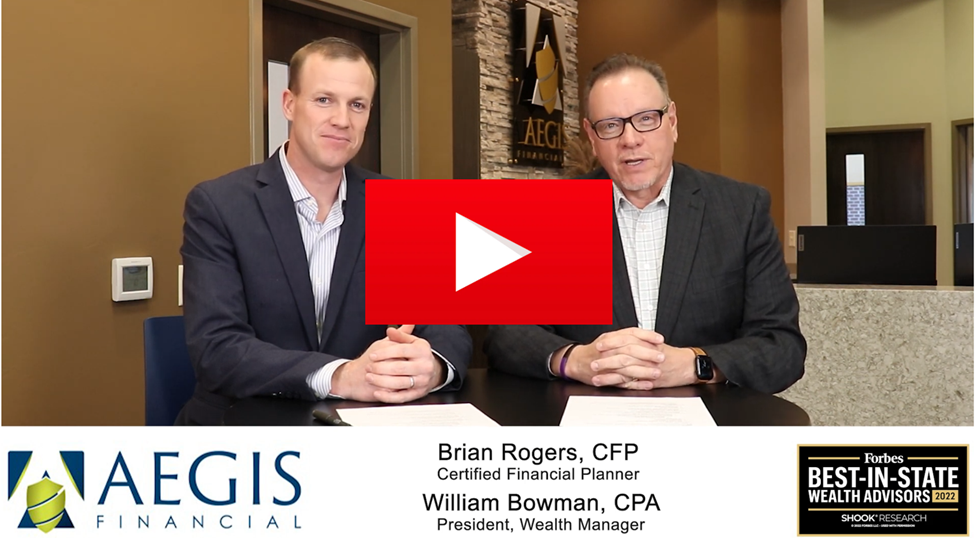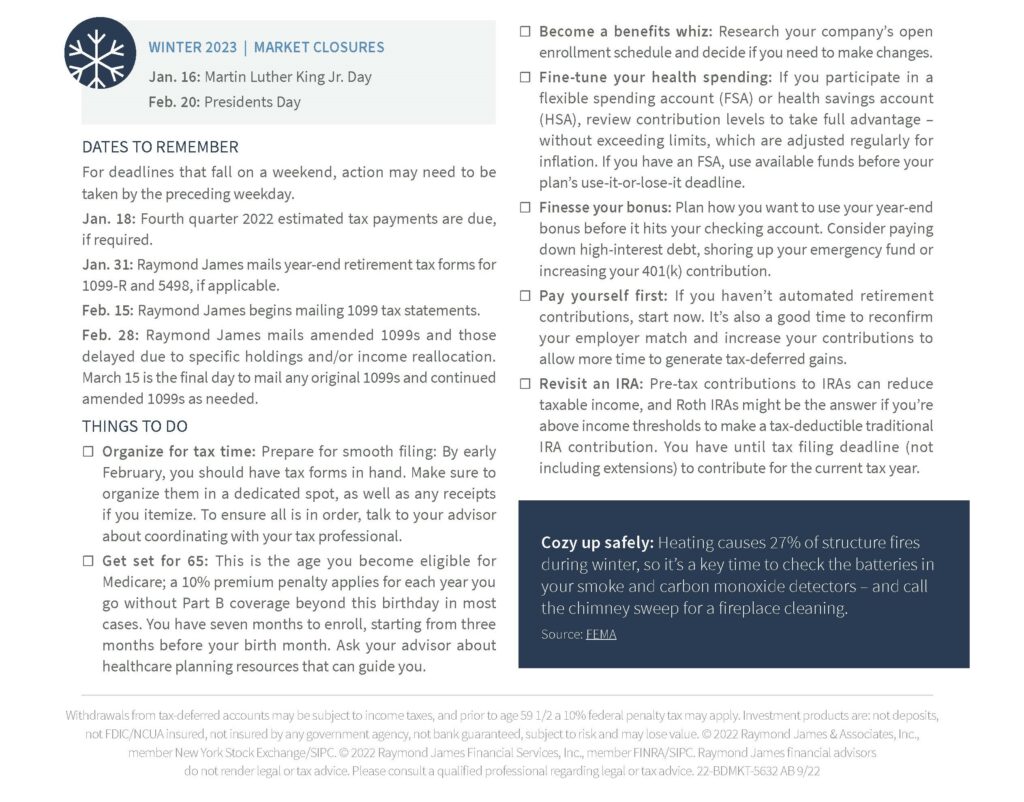Near-record levels.
The Internal Revenue Service has released new limits for the coming year. After months of high inflation and financial uncertainty, some of these cost-of-living-based adjustments have reached near-record levels.
Individual Retirement Accounts (IRAs). IRA contribution limits are up $500 in 2023 to $6,500. Catch-up contributions for those over age 50 remain at $1,000, bringing the total limit to $7,500.
Roth IRAs. The income phase-out range for Roth IRA contributions increases to $138,000-$153,000 for single filers and heads of household, a $9,000 increase. For married couples filing jointly, phase-out will be $218,000 to $228,000, a $14,000 increase. Married individuals filing separately see their phase-out range remain at $0-10,000.
Workplace Retirement Accounts. Those with 401(k), 403(b), 457 plans, and similar accounts will see a $2,000 increase for 2023, the limit rising to $22,500. Those aged 50 and older will now have the ability to contribute an extra $7,500, bringing their total limit to $30,000.
SIMPLE Accounts. A $1,500 increase in limits for 2023 gives individuals contributing to this incentive match plan a $15,500 stop light.
Other Changes. In addition to changes in contributions limits, the IRS also announced several other changes for 2023, including an increase to the annual exclusion for gifts to $17,000 per person and an increase to the estate tax exclusion threshold.
Keep in mind that this update is for informational purposes only, so consult with your tax professional before making any changes in anticipation of the new 2023 levels. You can also contact your trusted financial professional, and they can provide you with information about the pending changes.
This material was prepared by MarketingPro, Inc., and does not necessarily represent the views of the presenting party, nor their affiliates. This information has been derived from sources believed to be accurate. Please note - investing involves risk, and past performance is no guarantee of future results. The publisher is not engaged in rendering legal, accounting or other professional services. If assistance is needed, the reader is advised to engage the services of a competent professional. This information should not be construed as investment, tax or legal advice and may not be relied on for the purpose of avoiding any Federal tax penalty. This is neither a solicitation nor recommendation to purchase or sell any investment or insurance product or service, and should not be relied upon as such. All indices are unmanaged and are not illustrative of any particular investment.


























